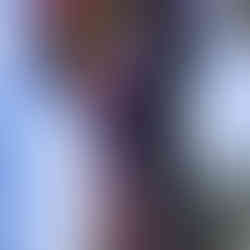Hollywood's First Ballroom
- KP
- Jan 5, 2024
- 4 min read
Updated: Jun 17
Come and trip the light fantastic at the Hollywood Roof Ballroom, located at the corner of Vine Street and Selma Avenue in “the heart of Movieland.”

Opened in 1925, the 10,000 square-foot space exemplified the latest in ballroom construction: a white maple floor “flawless and smooth as glass,” electrically-operated moveable stage, and lighting effects inspired by the aurora borealis.
There was also a soundproof radio broadcast room, as the nightly entertainment, originally the famed Henry Halstead Orchestra, was transmitted over the airwaves of Warner Bros.’ KFWB radio station from 11 pm to midnight Monday through Saturday.

The great hall was done in a symphony of royal purple, emerald green, blue, and gold. Paintings on the domed ceiling gave the impression of the sun radiating sparkling light against an azure blue sky. From the center hung a mirrored device that reflected light in the shape of butterflies fluttering around the room.
Harvey H. Carroll, known for his radio broadcasting of the Charleston, was hired “to take active charge of the dancing”: He and his wife Bernice, a former Vaudeville act and “exponents of modern dance,” offered public and private lessons for every skill level. One night at the Hollywood Roof Ballroom, Bernice danced all night in the arms of another man, refusing to let her husband cut in despite his pleas. In 1928, Harvey cited the incident as one of the many reasons he was divorcing his wife of 11 years (a judge originally denied his request for separation).

The ballroom also regularly hosted themed events: Old-Fashioned Dance Night (on Mondays), Mardi Gras Night, Collegiate Night, Hoodoo Night (on Friday the 13th), and Arctic Night in November 1925 when the weather forecast predicted snow. According to the Los Angeles Evening Citizen News, “a red hot band will be provided to keep dancers warm.”

For those not interested in dance, there were plenty of other entertainment options on the second floor of the Hollywood Roof Building. In 1925, the Bobbed Hair Contest welcomed every woman from ages 18 to 80 wearing the popular hairstyle. Sponsored by Warner Bros. to promote the comedy Bobbed Hair starring Marie Prevost and Kenneth Harlan, the grand-prize winner was awarded one week’s work in the movies. Film extras seeking studio contracts could also compete in the Miss Struggler Contest or Hollywood Revue and Personality Pageant. After all, Hollywood Roof Ballroom was located opposite the Famous Players-Lasky Studios on Vine Street until 1926.
The Hollywood Roof Building also offered a variety of businesses on street level. At the time of this photo in 1927, tenants included Bernie’s Deli (renowned for his “Hunk-a-Dory” corned beef), Old Europe Art store, Seymour & Seymour Paints, as well as Felix Beauty Shop along Selma Avenue. The monthly rent averaged between $200-$300.

By 1930, the Hollywood Roof Ballroom was out of step, but only in name. Over the next five years, the space was known as Hollywood Gardens, Bal Tabarin, and Victorian-themed The Nineties before becoming the Hollywood Associated Studios, a school of dance, stage, screen, radio, and voice.
In 1937, the building’s owners Phyllis Brunson and Marion Pringle—daughters of “Mother of Hollywood” Daeida Wilcox Beveridge—began construction next door on the Hollywood Recreation Center and remodeled Hollywood Roof Building’s facade with the same architects, Walker & Eisen, so it seamlessly matched the Streamline Moderne architecture.

But it also stripped away all remnants of the ballroom, outside and in: The second floor was gutted and converted into office space. In 1940, as the surrounding area became known as Radio City (Tom Breneman’s Breakfast in Hollywood was later broadcast from the former Hollywood Recreation Center), 1549 Vine Street was the headquarters of Broadcast Music Inc. (BMI), the performance rights organization founded by the National Association of Broadcasters.

On the street level, two businesses now occupied the new-and-improved storefronts: Thrifty Drug Store and at 1551 Vine, famed Latin nightclub La Conga (which evolved into Copacabana, Sugar Hill, and The Morocco, before rebranding as the Hollywood ticket office for the Santa Fe Railroad in 1949).

Today, the block of Vine Street from Sunset Boulevard to Selma Avenue is still an array of Streamline Moderne, albeit a replica of its Radio City heyday. In 2002, the former Hollywood Roof Building was among the historic structures demolished for the Sunset + Vine apartment community.

As luck would have it, the Hollywood Roof Ballroom lives on … at Universal Studios Orlando. The park’s Hollywood area is a step back in time, with vintage facades of historic structures including Mel’s Diner, Pantages, Schwab’s, Brown Derby, Hotel Hollywood, Montmartre—and the Hollywood Roof Building. Even better, its purpose pays homage to Vine Street’s heritage as the Universal Studios Radio Broadcast Center, a fully-functional studio where guests are invited to record their own show or podcast.

But there’s one detail of the replica not original to the building: a neon sign of a man and woman dancing that reads Hollywood Roof Ballroom & Cafe. When the lighting alternates, it appears as if the couple is dancing.
Perhaps in another dimension, they’re waltzing across a white maple dance floor to the sounds of the Henry Halstead Orchestra.
Do you think Hollywood Roof Ballroom dance instructor Harvey H. Carroll was the inspiration? Compare the neon sign to this 1926 portrait of him with Christie comedy star Duane Thompson...











Comments